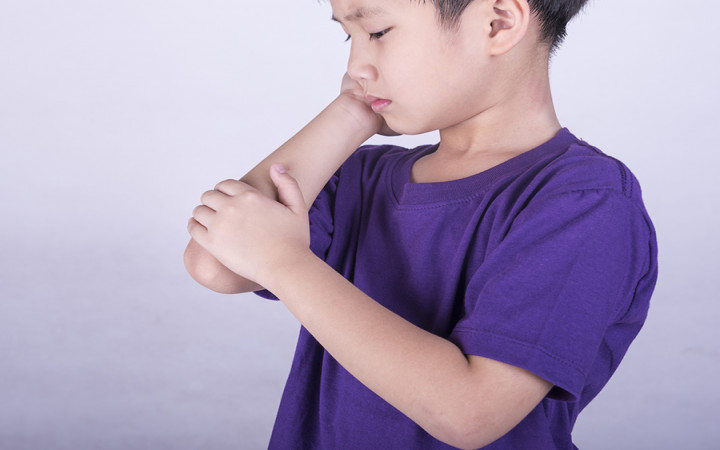Today’s Wonder of the Day was inspired by Joshua. Joshua Wonders, “How does Arthritis develop in a child's body?” Thanks for WONDERing with us, Joshua!
Have you ever taken a really long hike on a hard trail? No, we’re not talking about walking around the playground at recess. We’re talking about five miles or so on a rough path in the wilderness.
If you’ve ever been on a tough hike or if you’ve run a 5K race, played a 90-minute soccer game, or ice skated for several hours, then you probably know what it feels like to have sore joints and muscles the next day.
The day after hard exercise might start with a battle to get out of bed. It can hurt just to bend your arms and legs. Standing may cause popping joints, creaks, groans, and moans.
It’s natural to feel this way after a lot of exercise—especially if you’re not used to a hard workout. But what if you felt that way every morning due to a medical condition?
That’s the case for people with arthritis, a disease that causes swelling, stiffness, and pain in a person’s joints. There are many types of arthritis. Some come from joint use. Other times, arthritis causes inflammation of a membrane that lines the joints.
You may have an older friend or family member who has arthritis. Arthritis is most common among older adults, making movement harder and more painful as they get older. However, it can also strike children.
Under the age of 17, the most common type of arthritis experienced is juvenile idiopathic arthritis (JIA). You may also hear it referred to as juvenile rheumatoid arthritis (JRA). There are seven types of JIA, depending upon how many and which types of joints are affected.
Doctors still aren’t sure what causes JIA. Some believe it may be genetic. It’s possible that something in the environment, such as a virus, could trigger JIA in children who might have genes that make them susceptible to the condition. Fortunately, JIA isn’t contagious, so you can’t catch it from someone who has it.
JIA is an autoimmune disorder, which means the body attacks healthy cells rather than germs, such as bacteria and viruses. This causes the immune system to release chemicals, which cause the swelling, stiffness, and pain of arthritis.
There is no cure for JIA, but treatment with medicines that fight pain and inflammation can help. Physical therapy, stretching, and staying active support the body. Taking warm baths can also help soothe aching joints.
As a chronic health issue, JIA can last for several months to many years. Many children eventually outgrow JIA without lasting joint damage. Others may continue to have problems that need treatment.
Do you know someone with arthritis? Are they older or younger? What kinds of things are hard for them to do? How could you help them?
Standards: CCRA.R.1, CCRA.R.6, CCRA.R.9, CCRA.R.10, CCRA.L.1, CCRA.L.2, CCRA.L.3, CCRA.L.4, CCRA.L.5, CCRA.L.6, CCRA.SL.3, CCRA.SL.4, CCRA.SL.6 CCRA.W.2, CCRA.W.8




